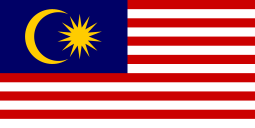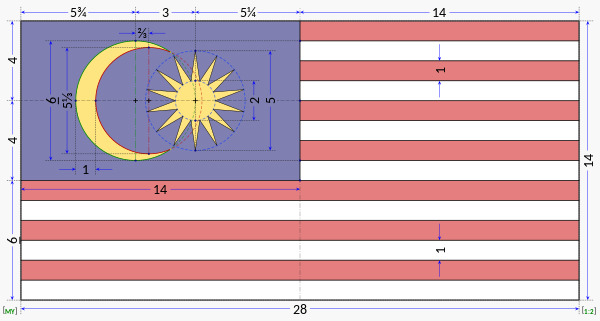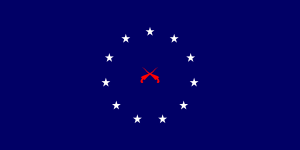Malaya refers to a number of historical and current political entities related to what is currently Peninsular Malaysia in Southeast Asia:

The Malayan Union was a union of the Malay states and the Straits Settlements of Penang and Malacca. It was the successor to British Malaya and was conceived to unify the Malay Peninsula under a single government to simplify administration. Following opposition by the ethnic Malays, the union was reorganised as the Federation of Malaya in 1948.

The Federation of Malaya, more commonly known as Malaya, was a country of what previously had been the Malayan Union and more previously, British Malaya. It comprised eleven states – nine Malay states and two of the Straits Settlements, Penang and Malacca. It was established on 1 February 1948.

The Federated Malay States was a federation of four protected states in the Malay Peninsula — Selangor, Perak, Negeri Sembilan and Pahang — established by the British government in 1895, which lasted until 1946, when they, together with two of the former Straits Settlements and the Unfederated Malay States, formed the Malayan Union. Two years later, the Union became the Federation of Malaya, which achieved independence in 1957, and finally Malaysia in 1963 with the inclusion of North Borneo, Sarawak and Singapore.

The coat of arms of Malaysia is a coat of arms comprising a shield or escutcheon, two tigers for supporters, a crescent and fourteen-pointed star for a crest and a motto. As the Malaysian coat of arms descended from that of the Federated Malay States under British colonial rule, it resembles European heraldic designs.

The term "Unfederated Malay States" was the collective name given to five British protected states in the Malay Peninsula during the first half of the 20th century. These states were Johor, Kedah, Kelantan, Perlis, and Terengganu. In contrast with the four adjoining Federated Malay States of Selangor, Perak, Pahang, and Negeri Sembilan, the five Unfederated Malay States lacked common institutions, and did not form a single state in international law; they were in fact standalone British protectorates.

The history of postage stamps and postal history of Malaysia, a state in Southeast Asia that occupies the south of the Malay Peninsula and Sarawak and Sabah in the north Borneo, includes the development of postal services in these periods:

The term "British Malaya" loosely describes a set of states on the Malay Peninsula and the island of Singapore that were brought under British hegemony or control between the late 18th and the mid-20th century. Unlike the term "British India", which excludes the Indian princely states, British Malaya is often used to refer to the Federated and the Unfederated Malay States, which were British protectorates with their own local rulers, as well as the Straits Settlements, which were under the sovereignty and direct rule of the British Crown, after a period of control by the East India Company.
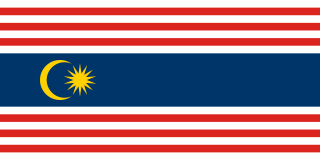
The flag of Kuala Lumpur, Malaysia was officially adopted on 14 May 1990 to commemorate the Dewan Bandaraya Kuala Lumpur (DBKL) or Kuala Lumpur City Hall's 100 years as the local authority of Kuala Lumpur. The flag was designed as a variant to Jalur Gemilang, the Flag of Malaysia, incorporating design elements with its own identity as one of the Federal Territories of the nation. The flag is flown annually on the first day of February, commemorating the day when Kuala Lumpur became a Federal Territory on 1 February 1974.

The flag of the Federated Malay States (1896–1946), the Malayan Union (1946–1948) and the Federation of Malaya (1948–1950) represented the union of the four Malay states of Selangor, Perak, Negeri Sembilan and Pahang in a federation as a protectorate under the British Crown.
The flag and the coat of arms of Johor are state symbols of Johor, Malaysia. Like other states of Malaysia with Malay royalties, the state symbols of Johor are influenced by Johor's royalties, as well as Islam and the political and natural features of the state.

The coat of arms of Singapore is the heraldic symbol representing the sovereign island country and city-state of Singapore located in maritime Southeast Asia. It was adopted in 1959, the year Singapore attained self-governance from the British Empire, and remains in use after its independence in 1965. The committee that created it, headed by Toh Chin Chye, who was also responsible for the national flag and the national anthem of Singapore.

The Malaysian Prison Department, is a department controlled by the Malaysian Minister of Home Affairs responsible for prisons where offenders sentenced by the courts are held. These jails also act as detention and recovery institutions.
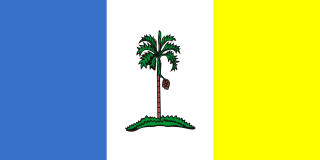
The flag of Penang consists of three vertical bands and an areca-nut palm on a grassy mount in the centre. All three bands are of equal width. From left to right, the colour of each band is light blue, white and yellow.

Peninsular Malaysia, historically known as Malaya, also known as West Malaysia or the "Malaysian Peninsula", is the western part of Malaysia that comprises the southern part of the Malay Peninsula on Mainland Southeast Asia and the nearby islands. Its area totals approximately 132,490 km2 (51,150 sq mi), which is nearly 40% of the total area of the country; the other 60% is in East Malaysia on the island of Borneo.

The Malaysia Agreement, or the Agreement relating to Malaysia between United Kingdom of Great Britain and Northern Ireland, Federation of Malaya, North Borneo, Sarawak and Singapore (MA63) was a legal document which agreed to combine North Borneo (Sabah), Sarawak, and Singapore with the existing states of Malaya, the resulting union being named Malaysia. Signed in London, United Kingdom, the agreement has been in effect since 16 September 1963; Singapore was subsequently expelled from Malaysia not long after this agreement, becoming an sovereign state on 9 August 1965.

The Sang Saka Malaya, sometimes shortened from Sang Pusaka Malaya, is known as the flag of the Parti Kebangsaan Melayu Malaya. It is also known as Bendera Rakyat. The flag features twelve stars arranged in three rows of four columns. It was introduced in 1947 by the combination of two political parties, Pusat Tenaga Ra'ayat (PUTERA) and the All-Malaya Council of Joint Action (AMCJA), as a proposal to the flag of an independent Federation of Malaya. According to a report by The Straits Times in 1947, The twelve stars represent the 12 states of the Malay Peninsula. It follows the concept of the American flag with 50 stars representing the 50 states that make up the United States.

Mohamed bin Hamzah was a Malaysian vexillographer, soldier and architect. He was the designer of the Jalur Gemilang, that is the national flag of Malaysia.
